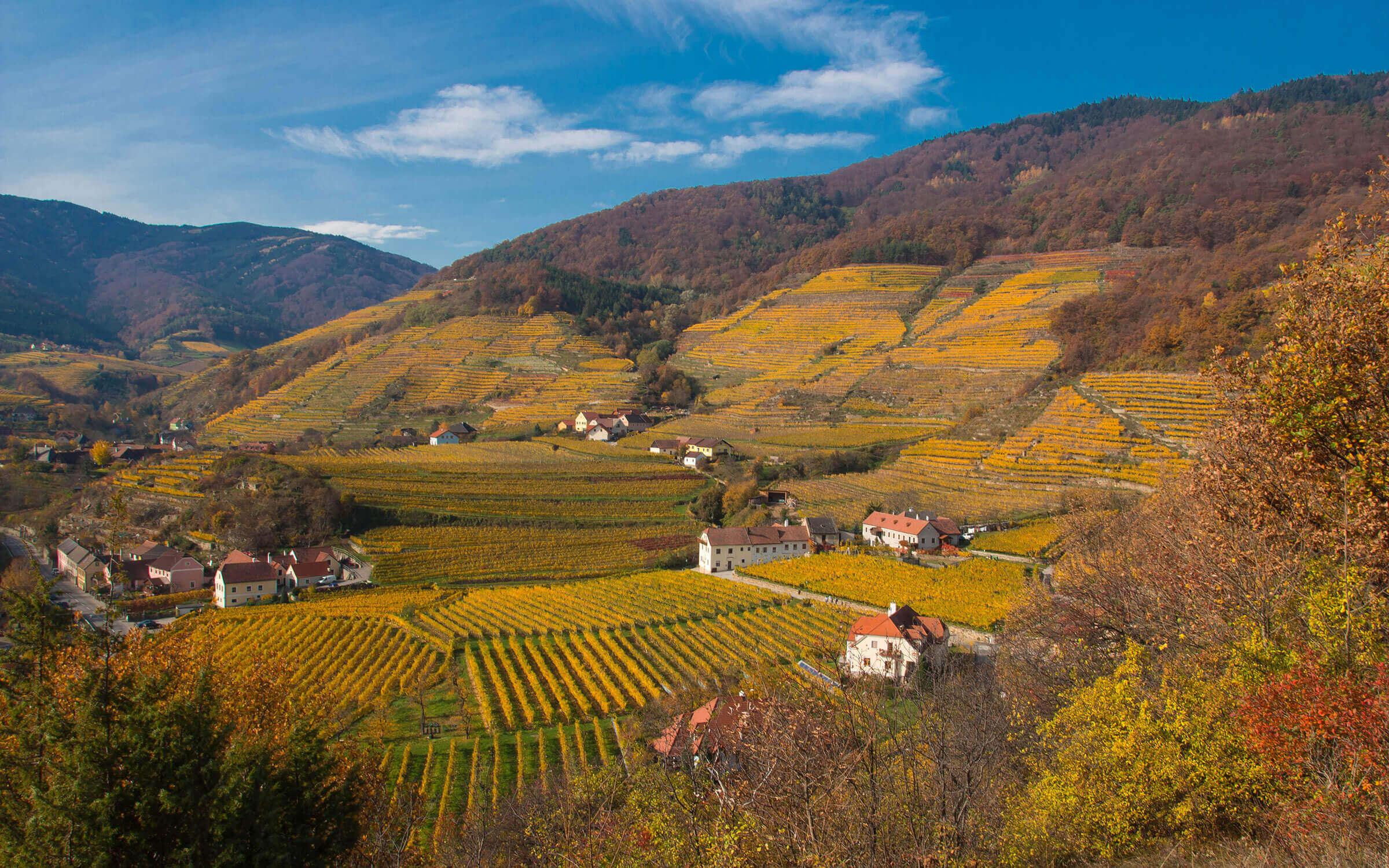A narrow band of land skirting 33 kilometres of the left bank of the Danube, the Wachau wine region not only boasts more than 1,000 growers of Austrian wine—its landscapes hold such beauty, they rank among UNESCO World Heritage sites.
Perhaps Austria’s most famous wine territory, it’s hardly alone. Austria is home to a total of 16 territories in four different regions of the country. The Wachau falls within Niederösterreich, Austria’s largest wine region and home to other territories, including Kremstal and Kamptal. Burgenland, due south of Vienna and bordering Hungary, is the country’s second largest region, followed by Styria and Wien.
Though its roster of grapes includes müller-Thurgau, chardonnay and St. Laurent, the three below particularly stand out in the Wachau.
Grapes of the Wachau Region

Grüner Veltliner:
Crown Prince of Austrian Wine
Peppery-fresh, fruit and spice character, mostly dry
The grüner veltliner is the most widely cultivated variety in Austria, making up more than a third of the country’s wine-growing areas. A typical Austrian specialty, it is found mostly in the Weinviertal, Kamptal, Kremstal and the Wachau, all wine-growing areas in the province of Niederösterreich, or Lower Austria. The quality of the grüner veltliner encompasses a wide spectrum: from a light and spritzy wine that should be drunk as a young Heuriger (from the last vintage), to a full-bodied Spätlese.


 This grape takes its name from Professor Zweigelt, who successfully crossed the blaufränkisch with the St. Laurent. His result, the Zweigelt, produces a wine with a bouquet that is distinctively fruity when young, and more delicate and harmonious when mature. Its spectrum is vast; from a light table wine enjoyed young, to a full-bodied wine lovingly aged. Because the sturdy Zweigelt vine produces excellent results throughout Austria’s red wine areas, the variety is seen as the hope of the country’s red wine production.
This grape takes its name from Professor Zweigelt, who successfully crossed the blaufränkisch with the St. Laurent. His result, the Zweigelt, produces a wine with a bouquet that is distinctively fruity when young, and more delicate and harmonious when mature. Its spectrum is vast; from a light table wine enjoyed young, to a full-bodied wine lovingly aged. Because the sturdy Zweigelt vine produces excellent results throughout Austria’s red wine areas, the variety is seen as the hope of the country’s red wine production.